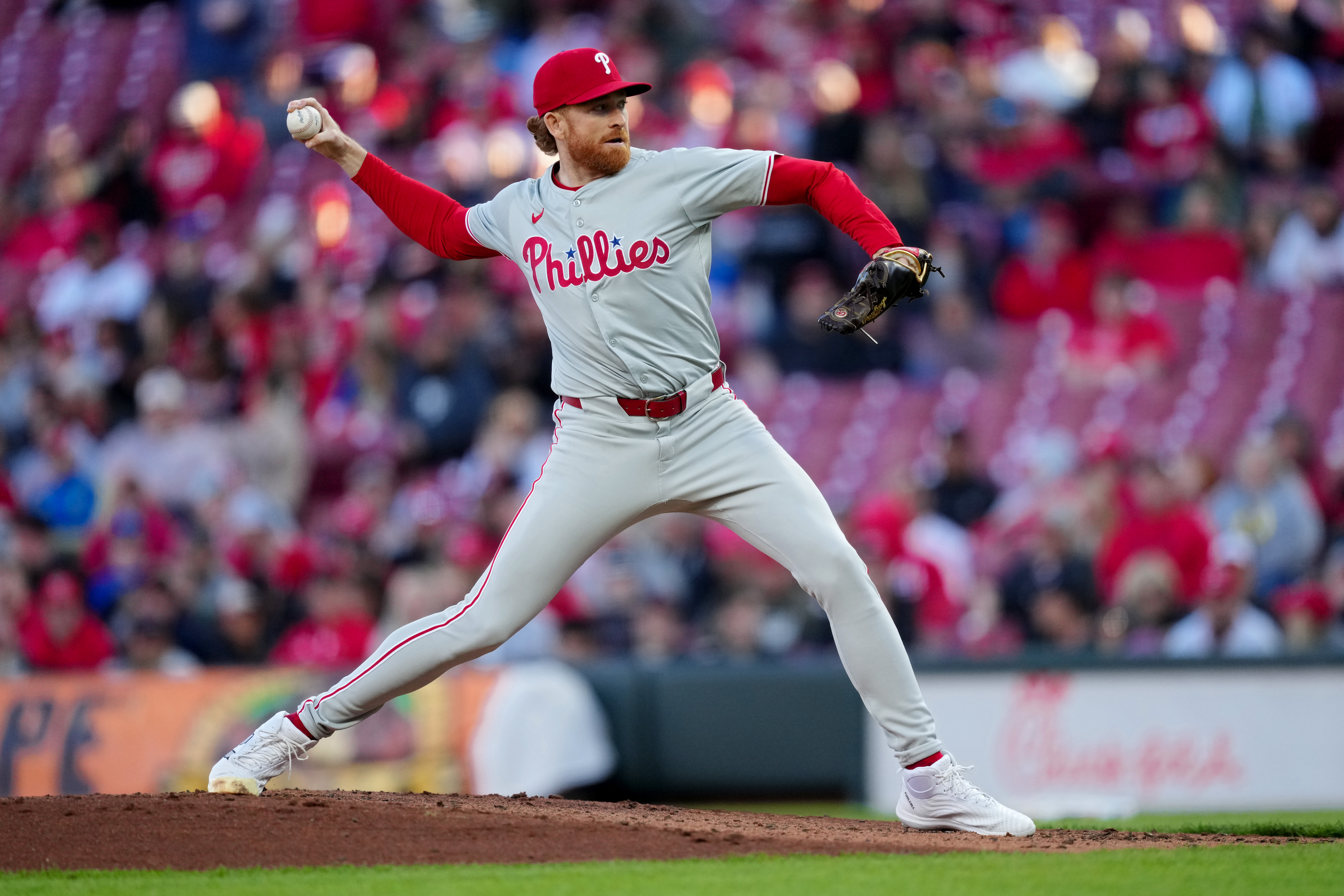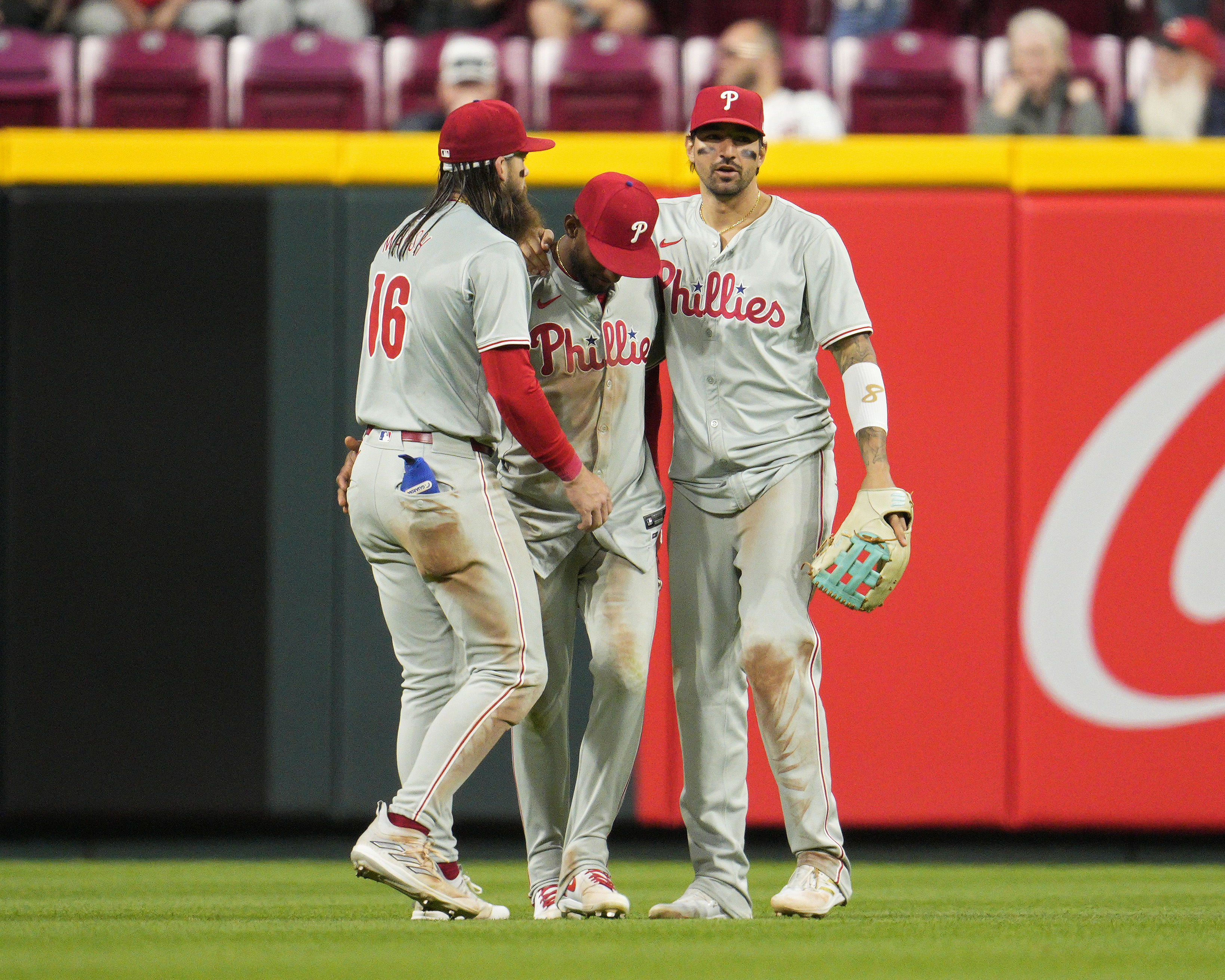In most other years, Jeremy Hellickson would have been just another two-month rental on the trade block. He would have commanded some sort of lottery-ticket return, one similar to what the Phillies received last summer for Ben Revere and Jonathan Papelbon. (Those players weren't rentals; other factors detracted from their trade value.)
But this is a summer unlike practically any other — the starting pitching market is incredibly thin. Winter is coming, and this winter could provide even fewer options for a team in need of mid-rotation help.
Joel Sherman, the New York Post columnist, had a GM tell him recently that, "If your guy has future control, you can sell a No. 4 starter as a No. 3, and a No. 3 as a No. 2 and so on." This can apply directly to someone like Hellickson, who in the National League is a No. 3 SP that can be treated like a No. 2 because of the lack of supply and huge demand for starting pitchers. In the AL, he's more of a No. 4 that becomes a No. 3 when the choices are this limited.
I've written in recent days and weeks about the benefits of the Phillies' keeping Hellickson. The quick summary is that if they don't trade him, they can extend him a qualifying offer this winter, which will be in the range of $17 million for one year. If he declines and signs elsewhere, the Phillies net a draft pick in between Rounds 1 and 2 next June. That pick would likely be somewhere between 30th and 50th overall, a range that in recent years has produced intriguing young players like Noah Syndergaard, Aaron Sanchez, Joey Gallo, Lance McCullers, Stephen Piscotty, Jose Berrios, Zach Eflin, Jackie Bradley Jr., Trevor Story, Michael Fulmer, Blake Snell, Taijuan Walker and Nick Castellanos.
In other words, keeping Hellickson and losing him to free agency could provide the Phillies an equal or perhaps better return than any trade. They have leverage and they've been using it.
Some have opined that this could backfire on the Phillies if Hellickson were to accept the qualifying offer. But I'm just not seeing it. Why would he do that? Yes, $17 million is a lot of money, but Hellickson could quite literally be the top free-agent starting pitcher in this winter's class and could get a whole lot more guaranteed money.
Seriously. Here is the list:
Philadelphia Phillies
Complete coverage of the Fightin' Phils and their MLB rivals from NBC Sports Philadelphia.
Hellickson, Brett Anderson, Brandon Beachy, Andrew Cashner, Jhoulys Chacin, Bartolo Colon, John Danks, Jorge de la Rosa, R.A. Dickey, Scott Feldman, Doug Fister, Jaime Garcia, Rich Hill, Mat Latos, Colby Lewis, Charlie Morton, Ivan Nova, Jake Peavy, Jered Weaver, C.J. Wilson.
There is not a single pitcher on that list who is either clearly better than Hellickson or pitching better than him right now. Cashner has declining stuff and a track record of inconsistency. Anderson, Beachy, Wilson and Hill have lengthy injury histories. Garcia and Colon are solid mid-rotation pieces, but are older, short-term players.
Cashner and Hill have both been traded within the last week — Cashner to the Marlins, Hill reportedly to the Dodgers on Monday. Because they were traded during the season, neither player can be extended a qualifying offer. That should make both more valuable in free agency because a signing team will not have to forfeit a draft pick.
But even still, that's just two available pitchers who'd have slightly more value than Hellickson.
Hellickson will be 29 years old this winter, and barring a disastrous final two months, he will be coming off a career-best K/BB ratio and his lowest WHIP since 2011, when he was AL Rookie of the Year.
Last winter, Mike Leake got a five-year, $80 million contract from the Cardinals. J.A. Happ signed for three years, $36 million with the Blue Jays. Hellickson's price tag is probably somewhere in between, perhaps something like four years, $60 million. If you're Jeremy Hellickson and agent Scott Boras and you're offered something in that range, why on Earth would you say, "Nah, let's take the $17 million and figure it out from there?" Especially considering next winter's free-agent starting pitching class is much stronger.
A scare would be that teams avoid Hellickson in free agency because they don't want to forfeit a pick. In recent years we've seen pitchers like Ervin Santana, Kyle Lohse and others linger in free agency because teams valued their draft pick and money over that pitcher. But those free-agent markets also involved more options for teams in need of pitching.
In all, it seems a worthwhile gamble for the Phillies to just hold onto Hellickson through the end of the season and go the draft-pick route, unless some team finally ponies up right around today's 4 p.m. deadline or in the month of August if Hellickson clears waivers (extremely unlikely) or is claimed (very likely).
And if, at the end of the day, Hellickson's market dries up more than most expect and he ultimately signs the qualifying offer, that $17 million won't kill the Phillies. They have a ton of payroll space, most of their biggest contracts coming off the books, and have seen Hellickson succeed this season. Having him around for one more year as insurance for a young starting pitching staff wouldn't be the worst thing. Some would ask why, when the Phillies have five starters in Aaron Nola, Jerad Eickhoff, Vince Velasquez, Zach Eflin and Jake Thompson. But teams don't go through a full season using just five guys, and there still isn't strong evidence that all five of those pitchers will have everything figured out at the major-league level as soon as 2017.



